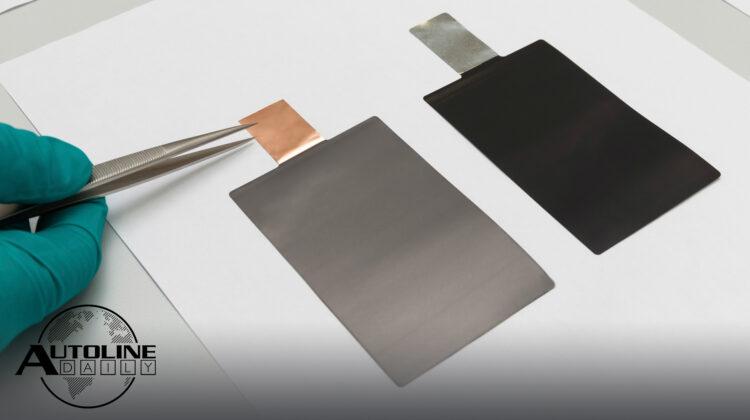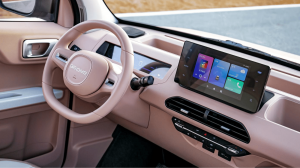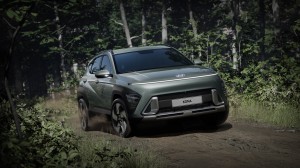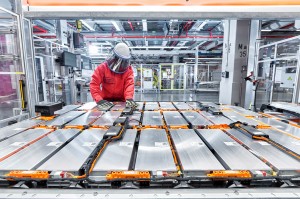
Listen to “AD #3472 – U.S. Delays Battery Sourcing Mandate; New Hyundai Kona Inspired by EV Concept; NIO Continues U.S. Expansion” on Spreaker.
Follow us on social media:
Runtime: 9:11
0:00 U.S. Delays EV Battery Sourcing Mandate
1:32 Hybrid Sales Up in 2022
2:20 Lucid Slashes Prices… Sort Of
3:40 Geely Panda Similar to Wuling MINI EV
4:54 New Hyundai Kona Inspired by EV Concept
5:47 Kia Design Boss Promoted to EVP
6:48 NIO Continues U.S. Expansion
7:33 Audi Preparing Productions Sites for EVs
Visit our sponsors to thank them for their support of Autoline Daily: Bridgestone, Intrepid Control Systems, and Schaeffler.
This is Autoline Daily, the show dedicated to enthusiasts of the global automotive industry.
U.S. DELAYS EV BATTERY MANDATE
The updated $7,500 EV tax credit goes into effect on January 1st but the U.S. Treasury Department is delaying EV battery sourcing mandates until March. That means EVs that wouldn’t qualify for the new requirements will be able to receive the full credit for a brief time. It could have a big impact on sales of some vehicles, like the Chevy Bolt EV, which will have a price tag just over $18,000 with the full credit. It’s probably a good thing GM decided to boost production. The Inflation Reduction Act requires that 40% of the value of critical minerals in the battery must be sourced in the U.S. or with a free-trade partner. It also requires that half of the battery components to be built in the U.S. Both of those percentages increase annually. But that will now be pushed back to March and could be a signal that the U.S. is going to water down those requirements. South Korea, Japan and the European Union are lobbying against the battery provisions and want exceptions so they can qualify for the subsidies. But loopholes, like tapping into the less stringent requirements for commercial vehicles, which are opposed by Senator Joe Manchin, probably aren’t going to happen.
HYBRID SALES UP IN 2022
Hybrid vehicles are seen as a half-step in the goal of electrifying vehicles but more and more consumers are snapping them up. According to BloombergNEF, automakers sold nearly 2 million hybrids globally in the first nine months of the year. That’s an increase of 45% compared to a year ago. And over the past three years, hybrid sales have quadrupled. And while it looks like hybrids will stick around longer than anticipated, as we reported earlier this month, automakers can’t get to carbon neutrality with hybrids or plug-in hybrids. So while they won’t go away in the short term, they have a limited shelf life that will likely expire sometime next decade.
LUCID SLASHES PRICES… SORT OF
In an effort to boost sales, EV startup Lucid Motors is slashing the price of the Grand Touring version of its Air sedan. The model now costs just under $140,000 down from $154,000. But it’s really just removing several features that were standard equipment. Its advanced driver assistance system, upgraded audio package and 21-inch wheels are now optional features. But buyers do receive a 90-day free trial for the ADAS and audio features, to see if they want to purchase them. Lucid says it’s doing this to give customers more flexibility in purchasing a vehicle.
GEELY PANDA SIMILAR TO WULING MINI EV
Remember when we said that mini EVs could become to China what Kei Cars are to Japan? And we showed you a new model from Geely called the Panda? Well, we thought you might like to get some more specs on that model now that we’ve got them. No battery size is given, but it’s said to have 200 kilometers or 124 miles of range, and a 30 kW or 41 horsepower electric motor, which provides a top speed of 100 km/h or 62 MPH. Those are all about the same as the base version of the Wuling MINI EV, although it’s available with a more powerful electric motor as well. The two EVs are also about the same size, but the Panda is slightly bigger. The Panda’s interior is highlighted by a thin, digital screen embedded in the dash for the driver, a floating display in the middle and a tower-like center console that rises up from the floor with the gear selector and window controls perched on top. Pricing for the Panda ranges from a bit over $5,700 to a little more than $7,100.
NEW HYUNDAI KONA GETS EV LOOKS
Hyundai is pulling the wraps back on the all-new Kona. It’s quite a bit bigger than the outgoing model at nearly an inch wider and about 6 inches longer overall. The Kona will now be available with an ICE, hybrid and pure electric powertrain. Hyundai says it started with the design of the EV version first, then worked its way out to the other models, which all have slight variations in their looks. And we’d say it drew heavy inspiration from the IONIQ SEVEN Concept, the front end styling is very similar. As for the interior it’s highlighted by a layered dashboard and two large display screens that have been combined under one glass front. More details on the all-new Kona will be revealed in “the coming months.”
KIA DESIGN BOSS PROMOTED TO EVP
Speaking of Hyundai and design, it keeps promoting designers into top roles at the company. Recently, the head of Group design, Luc Donckerwolke was promoted from EVP to a president of the Hyundai Group. And now Karim Habib, head of Kia global design, has been given the roll of Executive Vice President. He will be in charge of coming up with Kia’s EV brand identity.
NIO CONTINUES U.S. EXPANSION
Chinese automaker NIO continues its expansion in the U.S. In June it confirmed it had kicked off a comprehensive study of the U.S. market, formed a team dedicated to coming up with an entry plan and started recruiting manufacturing specialists. Now it’s looking to fill other rolls. NIO has about 60 open positions in California, most related to technology and, more importantly, safety, which also includes the standards and compliance of its vehicles. NIO’s North American headquarters and autonomous driving R&D center are both located in San Jose, California, so some of the recruits will be going towards those efforts as well.
AUDI PREPARING PRODUCTION SITES FOR EVs
Audi is getting prepared to transition to an all-electric future. The automaker will only launch EVs into the global market starting in 2026 and it plans to phase out combustion engine models by 2033. Audi will convert its existing plants to build electric vehicles and will only build new plants where additional capacity is needed. By the end of the decade, all of its plants worldwide will be building EVs and to make that happen, it’s spending half a billion euros between now and 2025, to train its workforce to make them. Audi is also aiming to cut its annual plant costs in half by 2033. It will achieve that by digitalizing production and reducing the complexity of vehicles, taking the production process into account from the start of development.
And be sure to join John and Gary for Autoline After Hours this week. They’ll be talking about the biggest stories in the automotive world that happened this year and will also be making predictions for what will happen in 2023. So be sure to tune in Thursday afternoon for what will be a fun show.
But that wraps up today’s show, thanks for watching.
Thanks to our partner for embedding Autoline Daily on its website: WardsAuto.com
Seamus and Sean McElroy cover the latest news in the automotive industry for Autoline Daily.









